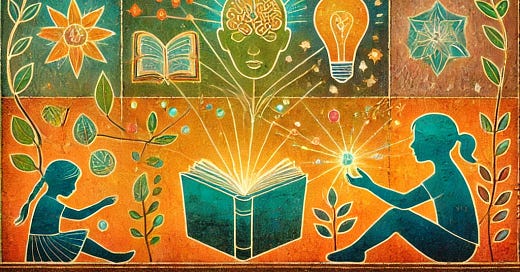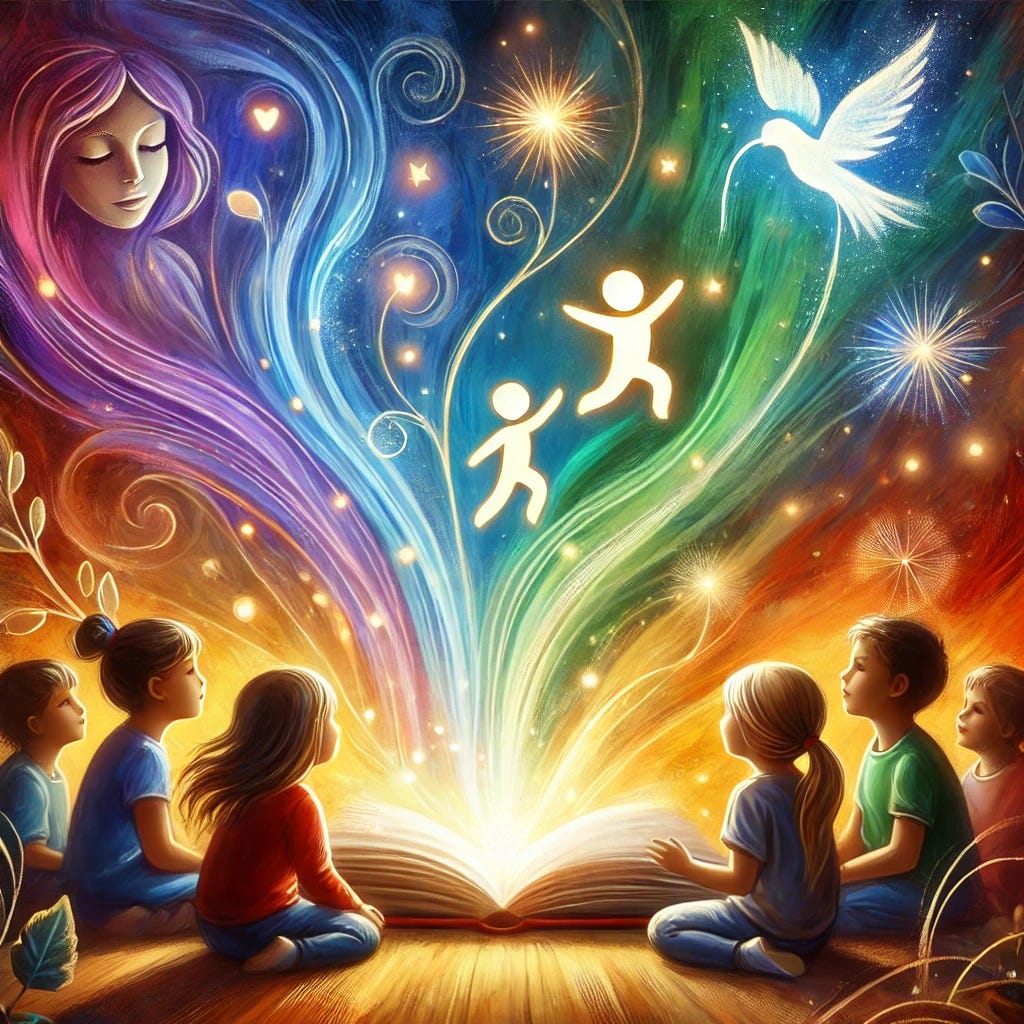Once Upon a Thought: Unlocking Self-Awareness in Kids Through Stories
How timeless tales can nurture emotional intelligence and self-awareness in children.
Imagine a child reading The Ugly Duckling and realizing the importance of self-acceptance and recognizing their inner strengths. Stories like these go beyond entertainment—they open doors to self-awareness, empathy, and emotional growth.
In today’s fast-paced, tech-driven world, developing self-awareness in children is more critical than ever. This essential skill empowers them to understand their thoughts, emotions, and actions, helping them build stronger relationships, make sound decisions, and overcome challenges with resilience.
What’s the best way to teach self-awareness? Through the timeless power of stories.
Why Self-Awareness Matters
Self-awareness is the foundation of emotional intelligence, helping children understand their feelings and how their behavior impacts others. It allows them to:
Regulate emotions and reactions.
Make decisions aligned with their values and needs.
Recognize their strengths and areas for growth.
Build empathy and connect meaningfully with others.
Learn from mistakes with a growth mindset.
Consider Pinocchio’s journey in The Adventures of Pinocchio. Pinocchio’s self-awareness grows as he learns to distinguish between right and wrong, understand his actions' consequences, and take responsibility.
These lessons, embedded in stories, shape a child’s emotional and social development.
How Stories Build Self-Awareness
From ancient myths to modern classics, stories have always been a mirror for self-reflection. Here’s how storytelling fosters self-awareness in children:
1. Encouraging Empathy
Think about Charlotte’s Web. When Wilbur feels sadness and gratitude for Charlotte’s sacrifice, children experience those emotions with him. This encourages them to identify and understand the feelings of others—a cornerstone of empathy.
2. Promoting Social-Emotional Learning
Stories like Inside Out, though a movie, explore emotions vividly. By understanding the characters' internal struggles, children learn to name their feelings and navigate social situations.
3. Fostering Critical Thinking
Remember The Tortoise and the Hare? It isn’t just a tale of winning; it’s about examining overconfidence and perseverance. Children reflect on these lessons, questioning their own attitudes and behaviors.
4. Celebrating Diversity and Inclusion
Wonder by R.J. Palacio shows children the beauty of accepting differences and standing in someone else’s shoes. Stories like these broaden their perspective and instill respect for diversity.
Bringing Stories to Life with Mindfulness
Mindful storytelling enhances self-awareness by making children active participants. Here’s how you can craft mindful stories:
Make It Relatable: Characters like Harry Potter or Matilda resonate because their struggles are universal—overcoming fear, finding acceptance, or discovering inner strength.
Infuse Positivity: Focus on themes of kindness, resilience, and courage, like in The Lion King.
Deliver a Clear Message: Stories like The Little Engine That Could teach persistence in a way that sticks.
When children connect deeply with characters, they reflect on their emotions and choices, growing in self-awareness.
You can download the Screen-free Connection blueprint for FREE to know how to decrease children’s screen time and engage them in productive activities.
Story-Inspired Activities to Build Self-Awareness
Take storytelling to the next level by pairing it with interactive activities.
1. Journaling After Stories
After reading Anne of Green Gables, ask your child to write:
“How do you think Anne felt when others judged her?”
“What would you have done in her place?”
Journaling helps kids explore their emotions and responses.
2. Body Language Awareness
Discuss characters' body language in stories, like the way Scrooge’s posture changes in A Christmas Carol. This sharpens children’s ability to interpret non-verbal cues in themselves and others.
3. Mindful Role-Playing
Act out scenes from The Wizard of Oz. How does Dorothy show courage? How does the Tin Man express compassion? Role-playing lets children practice self-awareness and empathy.
4. Creating Alternate Endings
What if the hare apologized to the tortoise after losing? Encouraging kids to rewrite endings fosters critical thinking and personal reflection.
Practical Mindfulness Techniques for Everyday Life
Mindfulness complements storytelling by helping children stay present and aware. Here are some simple practices:
Gratitude Journaling: After reading Pollyanna, list three things your child is thankful for.
Mindful Walking: Take a nature walk and talk about how Winnie the Pooh appreciates his environment.
Breathing Exercises: Before bedtime, practice slow breathing while reflecting on the calm scenes in Goodnight Moon.
These techniques ground children in the moment, enhancing their self-awareness and emotional regulation.
Role Models in Stories
Children find inspiration in characters who model self-awareness. Stories like The Tale of Peter Rabbit show how Peter reflects on his mischievous behavior, learns from his mistakes, and grows.
By identifying with such characters, kids begin to see their own potential for growth and change.
Final Thoughts
Stories are a gift that helps children understand themselves and the world around them. Whether it’s learning resilience from The Giving Tree or embracing individuality like Ferdinand the Bull, the lessons are endless.
As parents and educators, we have the unique opportunity to harness these tales to nurture empathy, emotional intelligence, and self-awareness in young minds.
As a passionate storyteller and advocate for mindful parenting, I invite you to explore the transformative power of storytelling with your child. Let’s make emotional intelligence a cornerstone of their journey!
Signing Off,
Mona Ghai
P.S.: Want to dive deeper into storytelling techniques that nurture self-awareness? Join my Story Parenting Masterclass to create impactful, memorable stories for your little ones.





To see the real world and also discover self, children should be encouraged to read stories consistently to make them break out of the cocoons of limited exposure. Reading should become a lifelong habit that makes one grow in al facets of life.